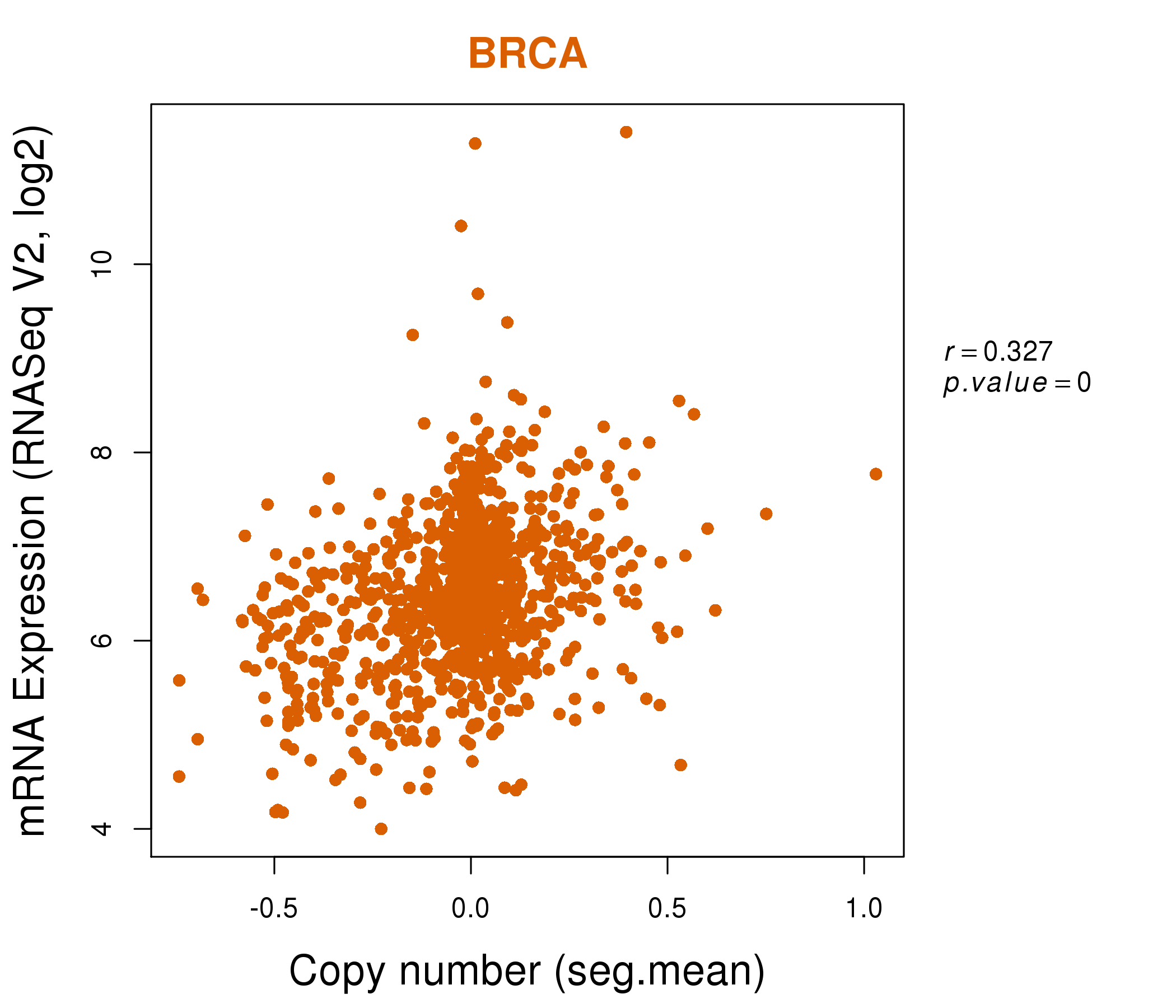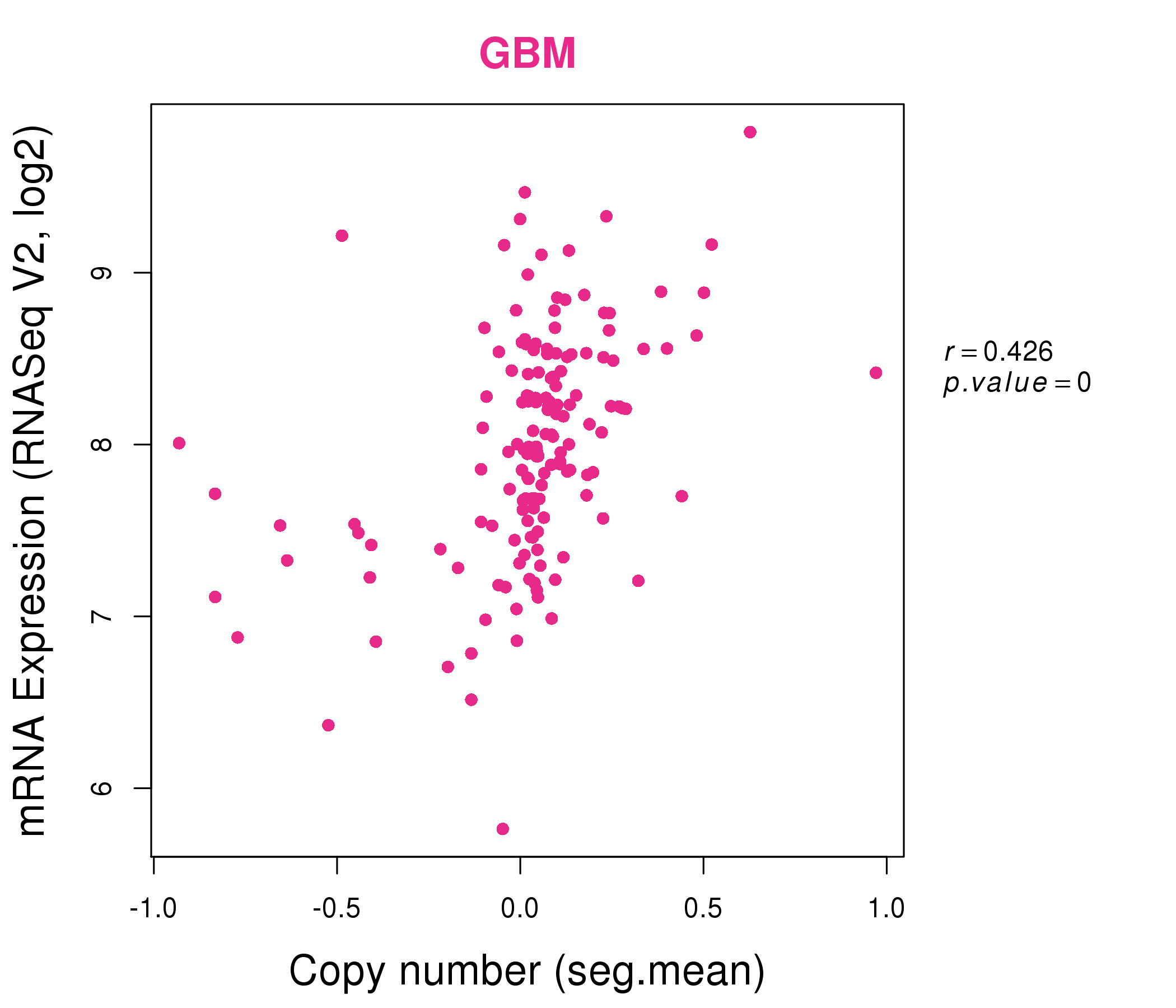|
|||||||||||||||||||||||||||||||||||||||||||||||||||||||||||||||||||||||||||||||||||||||||||||||||||||||||||||||||||||||||||||||||||||||||||||||||||||||||||||||||||||||||||||||||||||||||||||||||||||||||||||||||||||||||||||||||||||||||||||||||||||||||||||||||||||||||||||||||||||||||||||||||||||||||||||||||||||||||||||||||||||||||||||||||||||||||||||||||||||
| |
| Phenotypic Information (metabolism pathway, cancer, disease, phenome) |
| |
| |
| Gene-Gene Network Information: Co-Expression Network, Interacting Genes & KEGG |
| |
|
| Gene Summary for CCBL1 |
| Basic gene info. | Gene symbol | CCBL1 |
| Gene name | cysteine conjugate-beta lyase, cytoplasmic | |
| Synonyms | GTK|KAT1|KATI | |
| Cytomap | UCSC genome browser: 9q34.11 | |
| Genomic location | chr9 :131595391-131644354 | |
| Type of gene | protein-coding | |
| RefGenes | NM_001122671.1, NM_001122672.1,NM_001287390.1,NM_004059.4,NR_109829.1, | |
| Ensembl id | ENSG00000171097 | |
| Description | beta-lysase, kidneycysteine conjugate-beta lyase; cytoplasmic (glutamine transaminase K, kyneurenine aminotransferase)cysteine-S-conjugate beta-lyaseglutamine transaminase Kglutamine--phenylpyruvate transaminaseglutamine-phenylpyruvate aminotransfera | |
| Modification date | 20141211 | |
| dbXrefs | MIM : 600547 | |
| HGNC : HGNC | ||
| Ensembl : ENSG00000171097 | ||
| HPRD : 02769 | ||
| Vega : OTTHUMG00000020767 | ||
| Protein | UniProt: go to UniProt's Cross Reference DB Table | |
| Expression | CleanEX: HS_CCBL1 | |
| BioGPS: 883 | ||
| Gene Expression Atlas: ENSG00000171097 | ||
| The Human Protein Atlas: ENSG00000171097 | ||
| Pathway | NCI Pathway Interaction Database: CCBL1 | |
| KEGG: CCBL1 | ||
| REACTOME: CCBL1 | ||
| ConsensusPathDB | ||
| Pathway Commons: CCBL1 | ||
| Metabolism | MetaCyc: CCBL1 | |
| HUMANCyc: CCBL1 | ||
| Regulation | Ensembl's Regulation: ENSG00000171097 | |
| miRBase: chr9 :131,595,391-131,644,354 | ||
| TargetScan: NM_001122671 | ||
| cisRED: ENSG00000171097 | ||
| Context | iHOP: CCBL1 | |
| cancer metabolism search in PubMed: CCBL1 | ||
| UCL Cancer Institute: CCBL1 | ||
| Assigned class in ccmGDB | C | |
| Top |
| Phenotypic Information for CCBL1(metabolism pathway, cancer, disease, phenome) |
| Cancer | CGAP: CCBL1 |
| Familial Cancer Database: CCBL1 | |
| * This gene is included in those cancer gene databases. |
|
|
|
|
|
|
| |||||||||||||||||||||||||||||||||||||||||||||||||||||||||||||||||||||||||||||||||||||||||||||||||||||||||||||||||||||||||||||||||||||||||||||||||||||||||||||||||||||||||||||||||||||||||||||||||||||||||||||||||||||||||||||||||||||||||||||||||||||||||||||||||||||||||||||||||||||||||||||||||||||||||||||||||||||||||||||||||||||||||||||||||||||||||||||||
Oncogene 1 | Significant driver gene in | ||||||||||||||||||||||||||||||||||||||||||||||||||||||||||||||||||||||||||||||||||||||||||||||||||||||||||||||||||||||||||||||||||||||||||||||||||||||||||||||||||||||||||||||||||||||||||||||||||||||||||||||||||||||||||||||||||||||||||||||||||||||||||||||||||||||||||||||||||||||||||||||||||||||||||||||||||||||||||||||||||||||||||||||||||||||||||||||||||||
| cf) number; DB name 1 Oncogene; http://nar.oxfordjournals.org/content/35/suppl_1/D721.long, 2 Tumor Suppressor gene; https://bioinfo.uth.edu/TSGene/, 3 Cancer Gene Census; http://www.nature.com/nrc/journal/v4/n3/abs/nrc1299.html, 4 CancerGenes; http://nar.oxfordjournals.org/content/35/suppl_1/D721.long, 5 Network of Cancer Gene; http://ncg.kcl.ac.uk/index.php, 1Therapeutic Vulnerabilities in Cancer; http://cbio.mskcc.org/cancergenomics/statius/ |
| REACTOME_METABOLISM_OF_AMINO_ACIDS_AND_DERIVATIVES | |
| OMIM | |
| Orphanet | |
| Disease | KEGG Disease: CCBL1 |
| MedGen: CCBL1 (Human Medical Genetics with Condition) | |
| ClinVar: CCBL1 | |
| Phenotype | MGI: CCBL1 (International Mouse Phenotyping Consortium) |
| PhenomicDB: CCBL1 | |
| Mutations for CCBL1 |
| * Under tables are showing count per each tissue to give us broad intuition about tissue specific mutation patterns.You can go to the detailed page for each mutation database's web site. |
| - Statistics for Tissue and Mutation type | Top |
 |
| - For Inter-chromosomal Variations |
| There's no inter-chromosomal structural variation. |
| - For Intra-chromosomal Variations |
| * Intra-chromosomal variantions includes 'intrachromosomal amplicon to amplicon', 'intrachromosomal amplicon to non-amplified dna', 'intrachromosomal deletion', 'intrachromosomal fold-back inversion', 'intrachromosomal inversion', 'intrachromosomal tandem duplication', 'Intrachromosomal unknown type', 'intrachromosomal with inverted orientation', 'intrachromosomal with non-inverted orientation'. |
 |
| Sample | Symbol_a | Chr_a | Start_a | End_a | Symbol_b | Chr_b | Start_b | End_b |
| ovary | CCBL1 | chr9 | 131601227 | 131601247 | CCBL1 | chr9 | 131612088 | 131612108 |
| ovary | CCBL1 | chr9 | 131609831 | 131609851 | CCBL1 | chr9 | 131621628 | 131621648 |
| cf) Tissue number; Tissue name (1;Breast, 2;Central_nervous_system, 3;Haematopoietic_and_lymphoid_tissue, 4;Large_intestine, 5;Liver, 6;Lung, 7;Ovary, 8;Pancreas, 9;Prostate, 10;Skin, 11;Soft_tissue, 12;Upper_aerodigestive_tract) |
| * From mRNA Sanger sequences, Chitars2.0 arranged chimeric transcripts. This table shows CCBL1 related fusion information. |
| ID | Head Gene | Tail Gene | Accession | Gene_a | qStart_a | qEnd_a | Chromosome_a | tStart_a | tEnd_a | Gene_a | qStart_a | qEnd_a | Chromosome_a | tStart_a | tEnd_a |
| BF891052 | CCBL1 | 28 | 212 | 9 | 131643217 | 131643402 | CCBL1 | 208 | 526 | 9 | 131640998 | 131641316 | |
| BF890958 | CCBL1 | 15 | 200 | 9 | 131643215 | 131643402 | CCBL1 | 196 | 514 | 9 | 131640998 | 131641316 | |
| BF743879 | CCBL1 | 6 | 121 | 9 | 131596051 | 131597662 | CCBL1 | 108 | 544 | 9 | 131595480 | 131595915 | |
| Top |
| Mutation type/ Tissue ID | brca | cns | cerv | endome | haematopo | kidn | Lintest | liver | lung | ns | ovary | pancre | prost | skin | stoma | thyro | urina | |||
| Total # sample | 1 | |||||||||||||||||||
| GAIN (# sample) | 1 | |||||||||||||||||||
| LOSS (# sample) |
| cf) Tissue ID; Tissue type (1; Breast, 2; Central_nervous_system, 3; Cervix, 4; Endometrium, 5; Haematopoietic_and_lymphoid_tissue, 6; Kidney, 7; Large_intestine, 8; Liver, 9; Lung, 10; NS, 11; Ovary, 12; Pancreas, 13; Prostate, 14; Skin, 15; Stomach, 16; Thyroid, 17; Urinary_tract) |
| Top |
|
 |
| Top |
| Stat. for Non-Synonymous SNVs (# total SNVs=37) | (# total SNVs=9) |
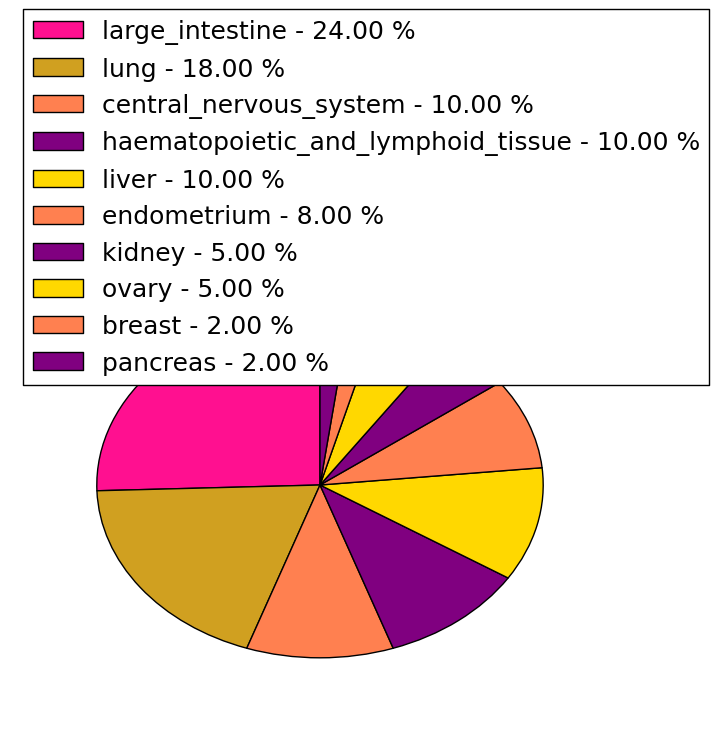 |  |
(# total SNVs=0) | (# total SNVs=0) |
| Top |
| * When you move the cursor on each content, you can see more deailed mutation information on the Tooltip. Those are primary_site,primary_histology,mutation(aa),pubmedID. |
| GRCh37 position | Mutation(aa) | Unique sampleID count |
| chr9:131599985-131599985 | p.T182T | 3 |
| chr9:131597853-131597853 | p.R317C | 3 |
| chr9:131600088-131600088 | p.P148L | 2 |
| chr9:131598075-131598075 | p.C280R | 2 |
| chr9:131597782-131597782 | p.L340L | 2 |
| chr9:131605043-131605043 | p.V31M | 2 |
| chr9:131600026-131600026 | p.G169S | 2 |
| chr9:131605015-131605015 | p.F40S | 1 |
| chr9:131597919-131597919 | p.E295K | 1 |
| chr9:131600067-131600067 | p.G155D | 1 |
| Top |
|
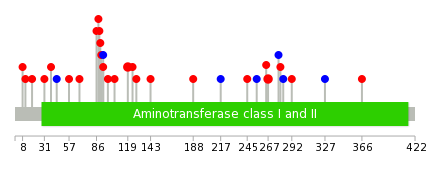 |
| Point Mutation/ Tissue ID | 1 | 2 | 3 | 4 | 5 | 6 | 7 | 8 | 9 | 10 | 11 | 12 | 13 | 14 | 15 | 16 | 17 | 18 | 19 | 20 |
| # sample | 1 | 1 | 6 | 2 | 6 | 3 | 1 | 8 | 2 | 2 | ||||||||||
| # mutation | 1 | 1 | 6 | 2 | 7 | 3 | 1 | 8 | 2 | 2 | ||||||||||
| nonsynonymous SNV | 1 | 1 | 5 | 1 | 6 | 2 | 1 | 6 | 2 | 2 | ||||||||||
| synonymous SNV | 1 | 1 | 1 | 1 | 2 |
| cf) Tissue ID; Tissue type (1; BLCA[Bladder Urothelial Carcinoma], 2; BRCA[Breast invasive carcinoma], 3; CESC[Cervical squamous cell carcinoma and endocervical adenocarcinoma], 4; COAD[Colon adenocarcinoma], 5; GBM[Glioblastoma multiforme], 6; Glioma Low Grade, 7; HNSC[Head and Neck squamous cell carcinoma], 8; KICH[Kidney Chromophobe], 9; KIRC[Kidney renal clear cell carcinoma], 10; KIRP[Kidney renal papillary cell carcinoma], 11; LAML[Acute Myeloid Leukemia], 12; LUAD[Lung adenocarcinoma], 13; LUSC[Lung squamous cell carcinoma], 14; OV[Ovarian serous cystadenocarcinoma ], 15; PAAD[Pancreatic adenocarcinoma], 16; PRAD[Prostate adenocarcinoma], 17; SKCM[Skin Cutaneous Melanoma], 18:STAD[Stomach adenocarcinoma], 19:THCA[Thyroid carcinoma], 20:UCEC[Uterine Corpus Endometrial Carcinoma]) |
| Top |
| * We represented just top 10 SNVs. When you move the cursor on each content, you can see more deailed mutation information on the Tooltip. Those are primary_site, primary_histology, mutation(aa), pubmedID. |
| Genomic Position | Mutation(aa) | Unique sampleID count |
| chr9:131600026 | p.G119S,CCBL1 | 2 |
| chr9:131597853 | p.R267C,CCBL1 | 2 |
| chr9:131599191 | p.L128R,CCBL1 | 1 |
| chr9:131600576 | p.V31M,CCBL1 | 1 |
| chr9:131597777 | p.R124C,CCBL1 | 1 |
| chr9:131599998 | p.W18R,CCBL1 | 1 |
| chr9:131600580 | p.D11Y,CCBL1 | 1 |
| chr9:131597803 | p.R366W,CCBL1 | 1 |
| chr9:131600011 | p.G105D,CCBL1 | 1 |
| chr9:131600646 | p.R8Q,CCBL1 | 1 |
| * Copy number data were extracted from TCGA using R package TCGA-Assembler. The URLs of all public data files on TCGA DCC data server were gathered on Jan-05-2015. Function ProcessCNAData in TCGA-Assembler package was used to obtain gene-level copy number value which is calculated as the average copy number of the genomic region of a gene. |
 |
| cf) Tissue ID[Tissue type]: BLCA[Bladder Urothelial Carcinoma], BRCA[Breast invasive carcinoma], CESC[Cervical squamous cell carcinoma and endocervical adenocarcinoma], COAD[Colon adenocarcinoma], GBM[Glioblastoma multiforme], Glioma Low Grade, HNSC[Head and Neck squamous cell carcinoma], KICH[Kidney Chromophobe], KIRC[Kidney renal clear cell carcinoma], KIRP[Kidney renal papillary cell carcinoma], LAML[Acute Myeloid Leukemia], LUAD[Lung adenocarcinoma], LUSC[Lung squamous cell carcinoma], OV[Ovarian serous cystadenocarcinoma ], PAAD[Pancreatic adenocarcinoma], PRAD[Prostate adenocarcinoma], SKCM[Skin Cutaneous Melanoma], STAD[Stomach adenocarcinoma], THCA[Thyroid carcinoma], UCEC[Uterine Corpus Endometrial Carcinoma] |
| Top |
| Gene Expression for CCBL1 |
| * CCLE gene expression data were extracted from CCLE_Expression_Entrez_2012-10-18.res: Gene-centric RMA-normalized mRNA expression data. |
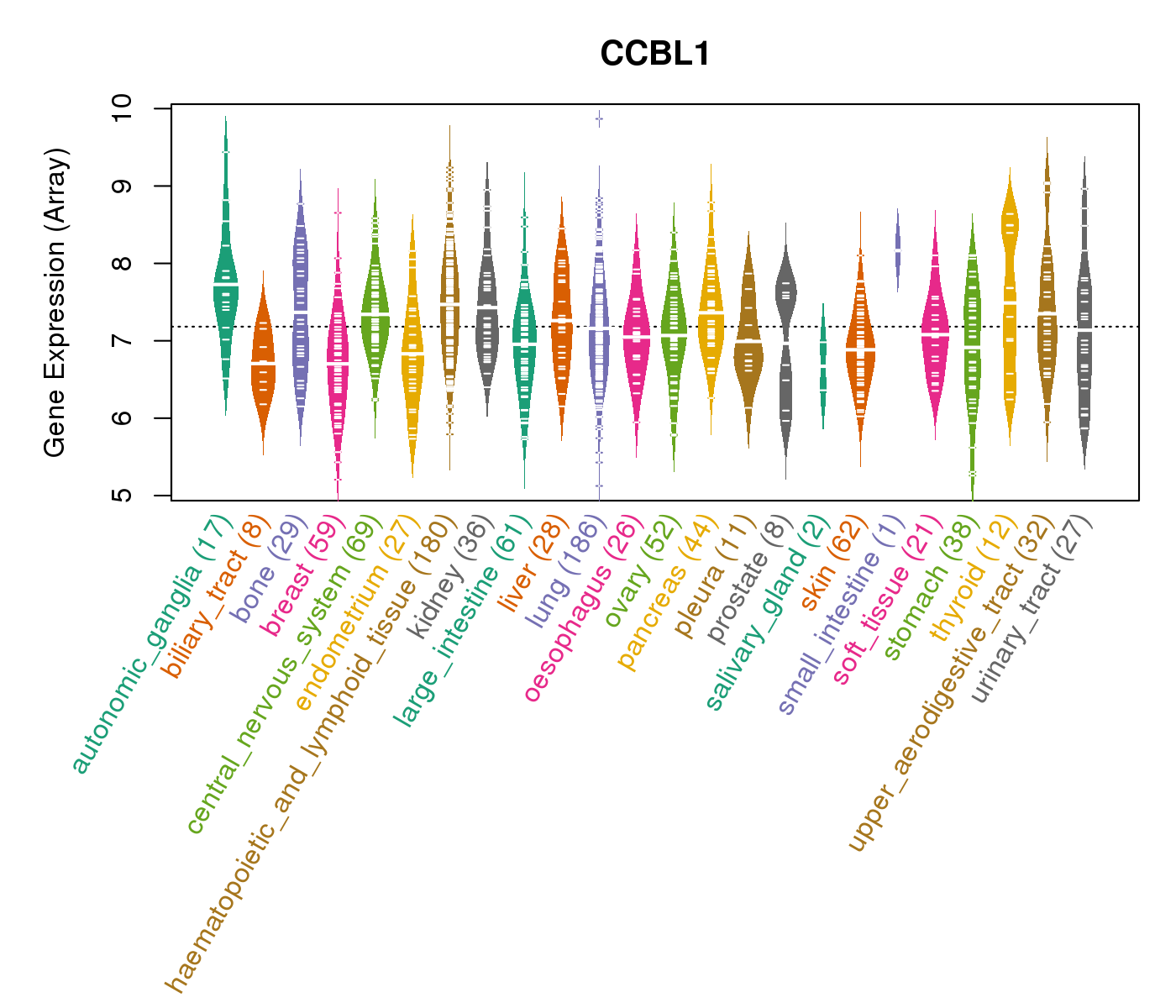 |
| * Normalized gene expression data of RNASeqV2 was extracted from TCGA using R package TCGA-Assembler. The URLs of all public data files on TCGA DCC data server were gathered at Jan-05-2015. Only eight cancer types have enough normal control samples for differential expression analysis. (t test, adjusted p<0.05 (using Benjamini-Hochberg FDR)) |
 |
| Top |
| * This plots show the correlation between CNV and gene expression. |
: Open all plots for all cancer types
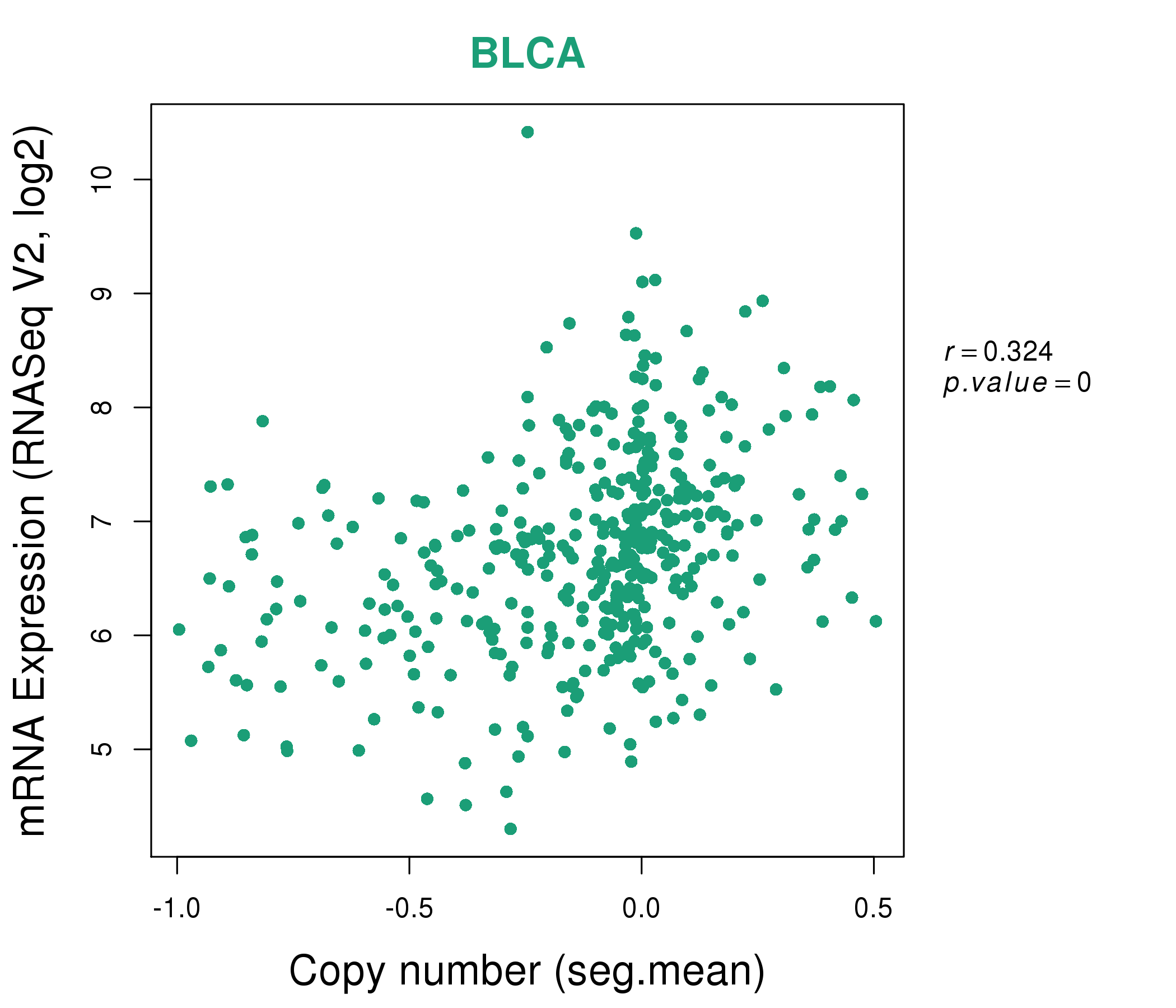 |
|
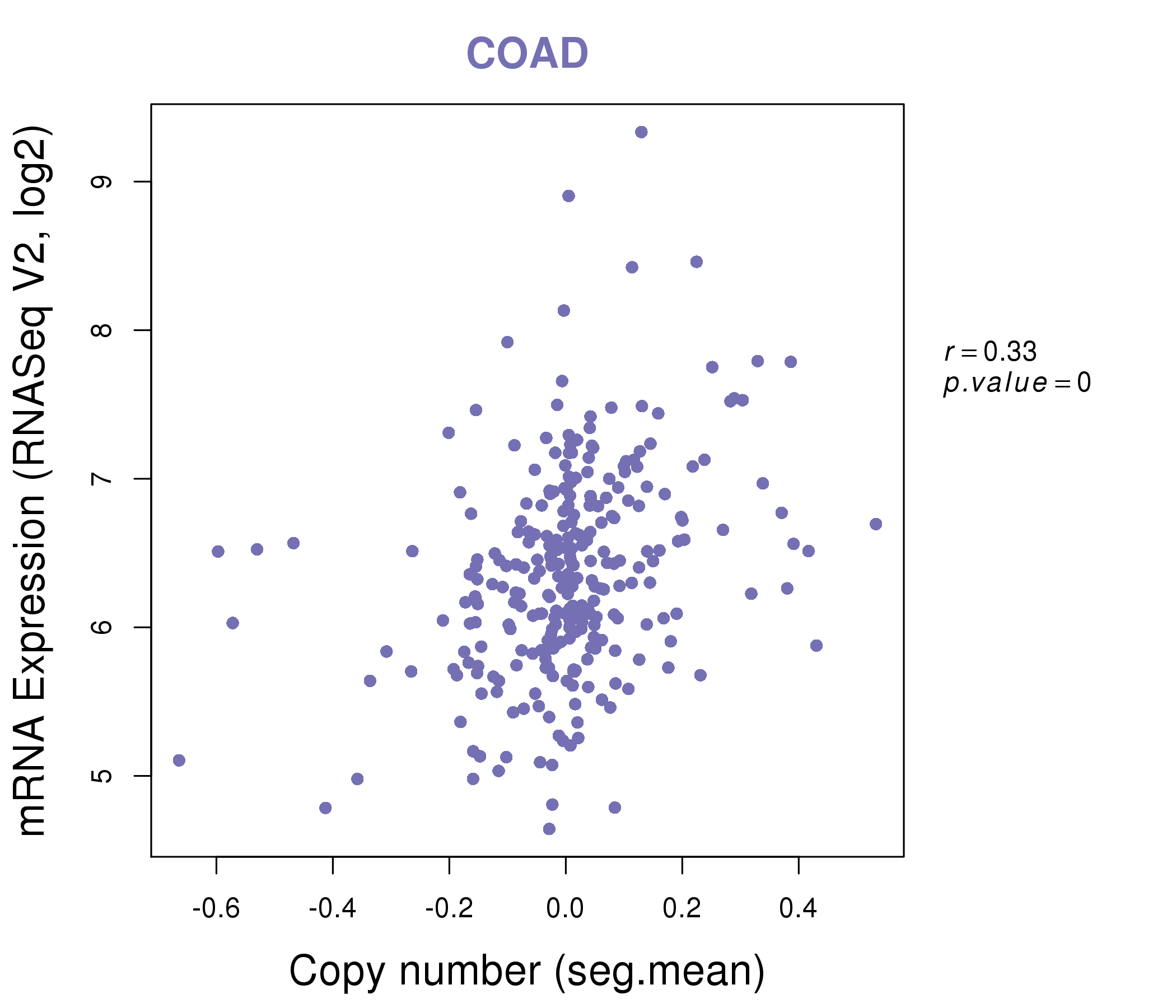 |
|
| Top |
| Gene-Gene Network Information |
| * Co-Expression network figures were drawn using R package igraph. Only the top 20 genes with the highest correlations were shown. Red circle: input gene, orange circle: cell metabolism gene, sky circle: other gene |
: Open all plots for all cancer types
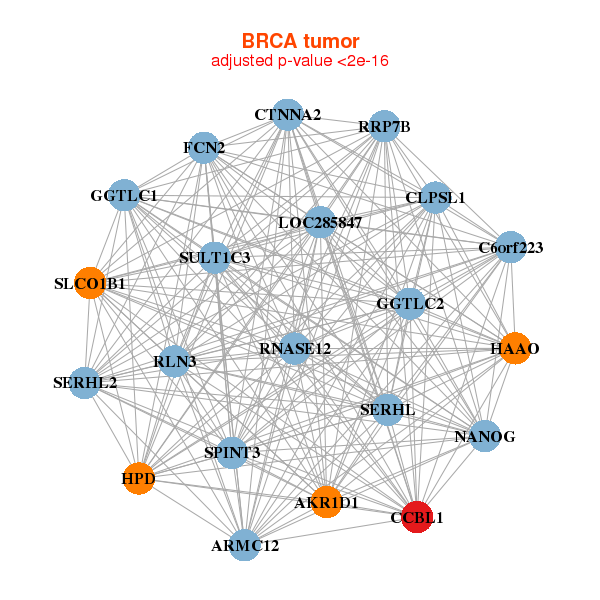 |
| ||||
| AKR1D1,CLPSL1,C6orf223,ARMC12,CCBL1,CTNNA2,FCN2, GGTLC1,GGTLC2,HAAO,HPD,LOC285847,NANOG,RLN3, RNASE12,RRP7B,SERHL2,SERHL,SLCO1B1,SPINT3,SULT1C3 | APOD,B4GALNT2,CCBL1,ENPP3,F9,GSTM2P1,GUSB, HAAO,HIST1H2AD,HIST1H2AE,HIST1H2BG,HIST1H4H,ISX,NANOG, NAT2,PON3,PPEF1,SERHL,SPINK8,SULT1C3,UGT2B11 | ||||
 |
| ||||
| BEAN,CA6,CACNG6,CCBL1,CCK,DGCR5,EPHB6, FBXO2,FGF19,GAS6-AS2,HGFAC,KLK8,PAK7,PAPL, PLCH2,SLC1A5,SLIT1,SOHLH1,TCHH,TEX19,ZNF735 | ACD,ANKRD29,ARL3,BEND5,METTL22,CA11,CADM1, CCBL1,CHN1,CRELD1,CYB5R1,FAHD2B,CERS4,MAGED2, RAMP1,RNF215,SEC22C,STX1A,TOX,TRNP1,ZNF346 |
| * Co-Expression network figures were drawn using R package igraph. Only the top 20 genes with the highest correlations were shown. Red circle: input gene, orange circle: cell metabolism gene, sky circle: other gene |
: Open all plots for all cancer types
| Top |
: Open all interacting genes' information including KEGG pathway for all interacting genes from DAVID
| Top |
| Pharmacological Information for CCBL1 |
| DB Category | DB Name | DB's ID and Url link |
| * Gene Centered Interaction Network. |
 |
| * Drug Centered Interaction Network. |
| DrugBank ID | Target Name | Drug Groups | Generic Name | Drug Centered Network | Drug Structure |
| DB00114 | cysteine conjugate-beta lyase, cytoplasmic | nutraceutical | Pyridoxal Phosphate | 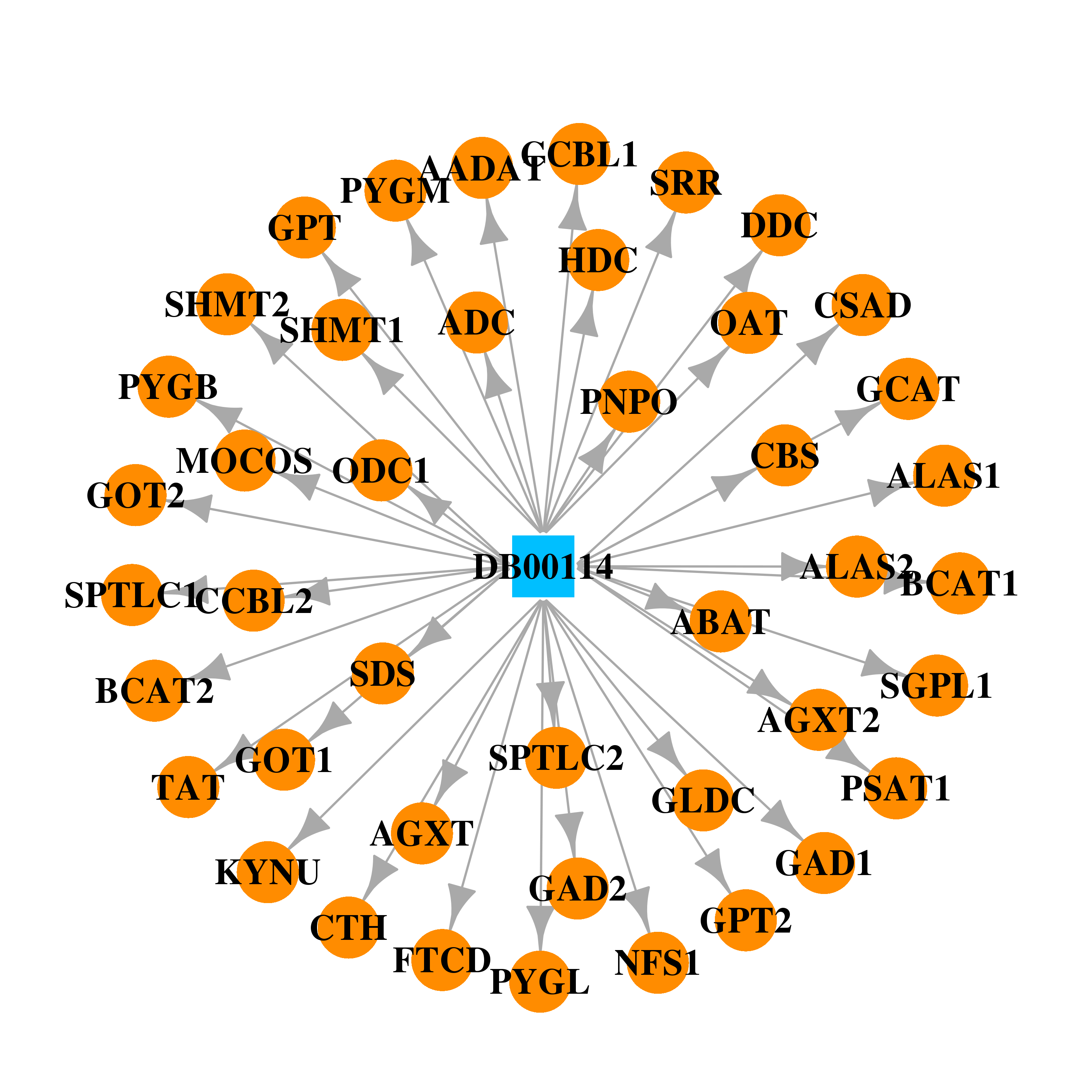 | 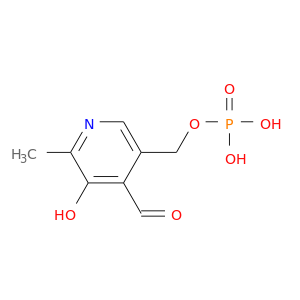 |
| DB02142 | cysteine conjugate-beta lyase, cytoplasmic | experimental | Pyridoxamine-5'-Phosphate |  | 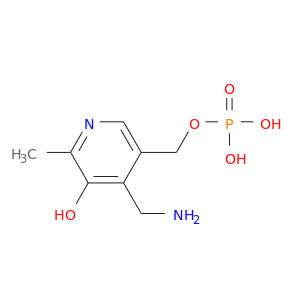 |
| DB02556 | cysteine conjugate-beta lyase, cytoplasmic | experimental | D-Phenylalanine |  | 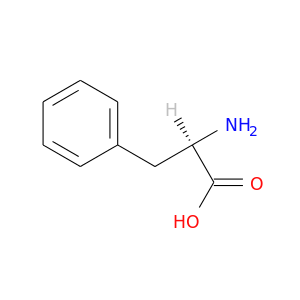 |
| DB04083 | cysteine conjugate-beta lyase, cytoplasmic | experimental | N'-Pyridoxyl-Lysine-5'-Monophosphate | 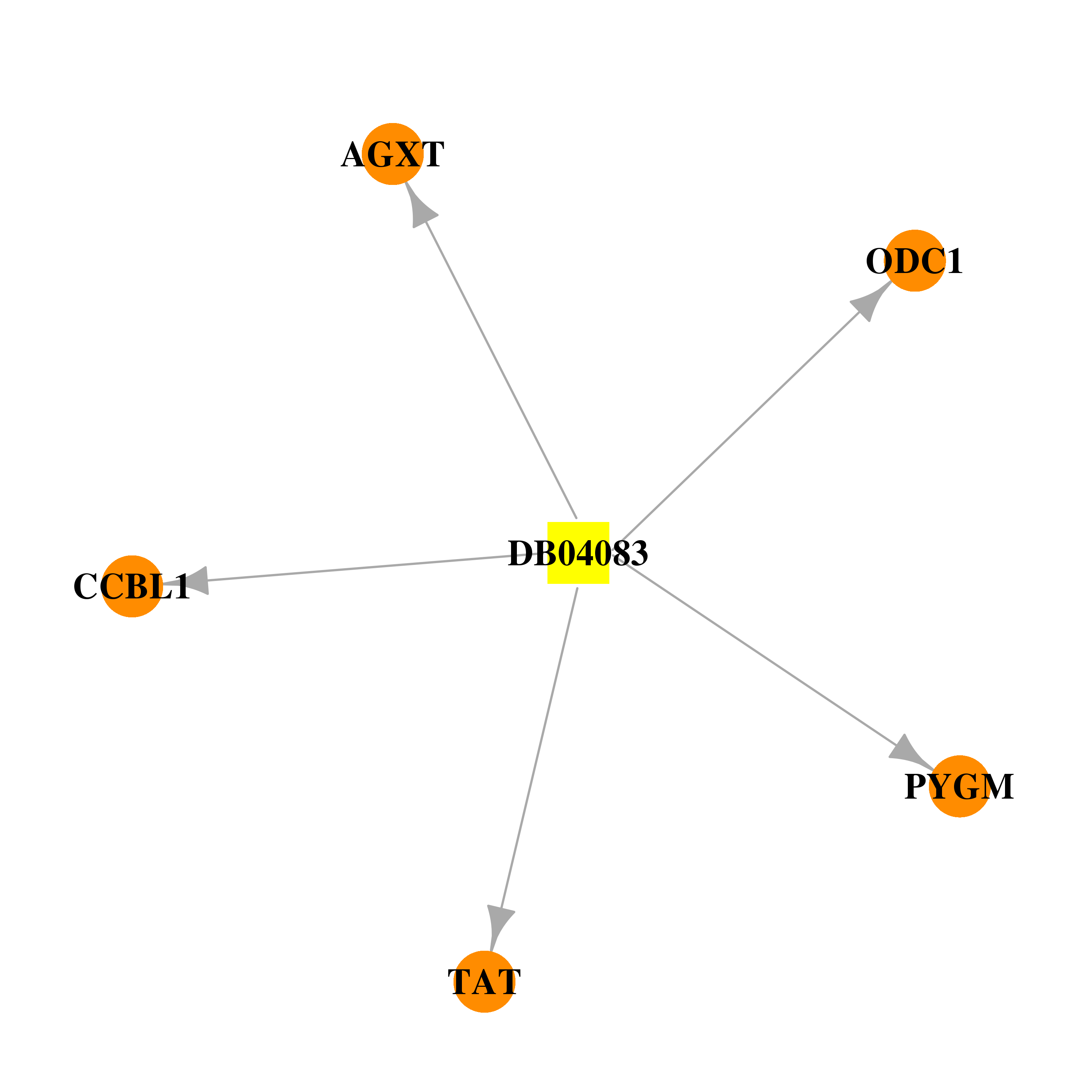 |  |
| DB07950 | cysteine conjugate-beta lyase, cytoplasmic | experimental | 1H-INDOL-3-YLACETIC ACID |  |  |
| Top |
| Cross referenced IDs for CCBL1 |
| * We obtained these cross-references from Uniprot database. It covers 150 different DBs, 18 categories. http://www.uniprot.org/help/cross_references_section |
: Open all cross reference information
|
Copyright © 2016-Present - The Univsersity of Texas Health Science Center at Houston @ |






